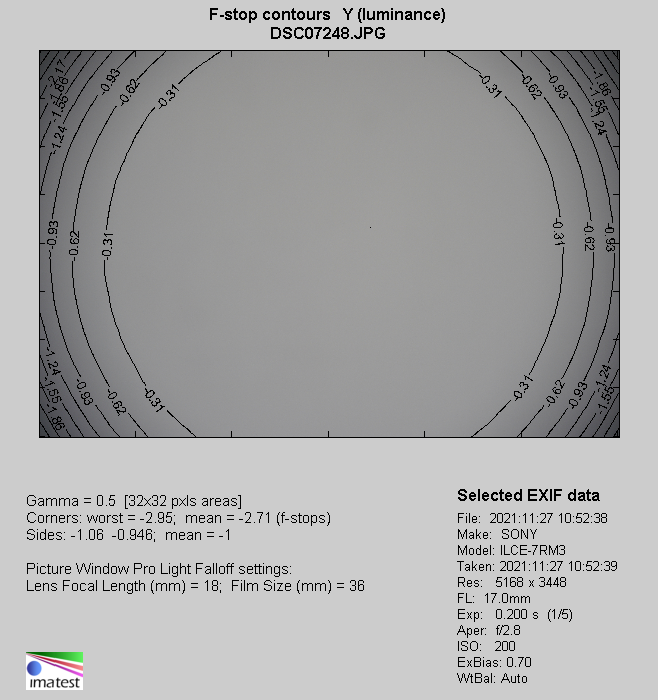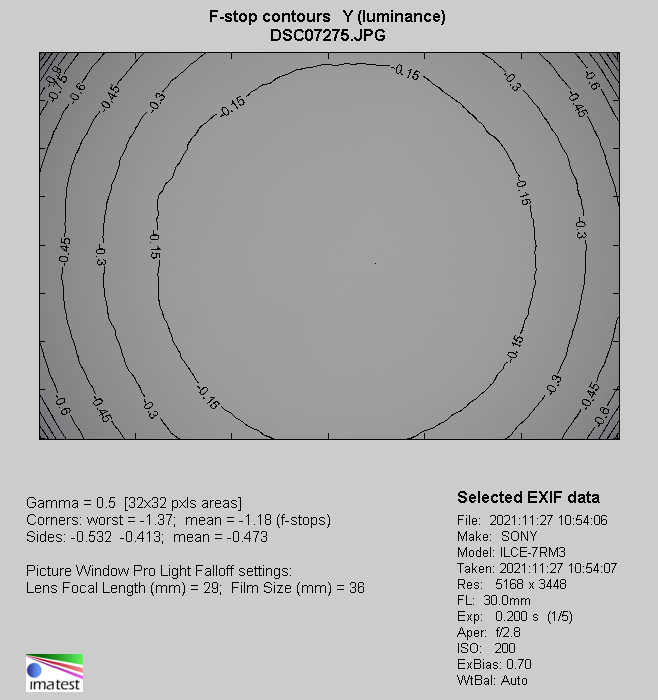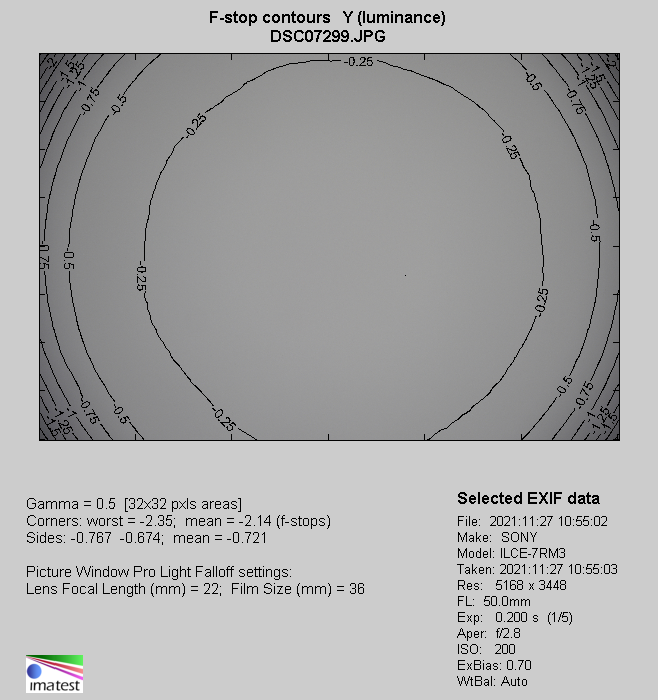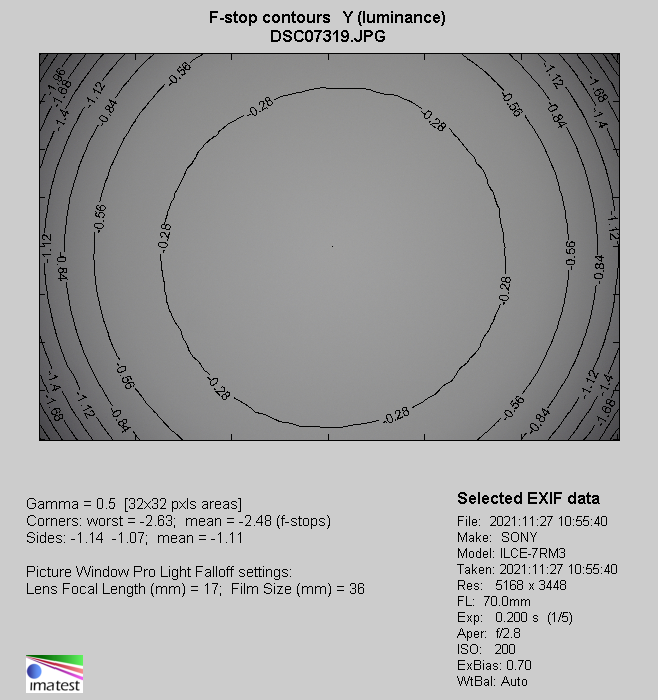Tamron 17-70 mm f/2.8 Di III-A VC RXD
8. Vignetting
| A7R III, APS-C, JPEG, 17ámm, f/2.8 | A7R III, APS-C, JPEG, 17ámm, f/4.0 |

|

|
| A7R III, APS-C, JPEG, 30ámm, f/2.8 | A7R III, APS-C, JPEG, 30ámm, f/4.0 |

|

|
| A7R III, APS-C, JPEG, 50ámm, f/2.8 | A7R III, APS-C, JPEG, 50ámm, f/4.0 |

|

|
| A7R III, APS-C, JPEG, 70ámm, f/2.8 | A7R III, APS-C, JPEG, 70ámm, f/4.0 |

|

|
Of course the widest angle of view and the maximum relative aperture constitute the most difficult combination. In its case vignetting amounts to as much as 61% (−2.71 EV). Traditionally stopping down the lens helps to fight that – by f/4.0 we got a result of 45% (−1.74 EV), by f/5.6 it decreases to 33% (−1.18 EV), and by f/8.0 you are able to reduce it to 27% (−0.92 EV). Only by f/11.0 and f/16.0 you deal with low level, with the results being, respectively 22% (−0.70 EV), and 18% (−0.59 EV).
Please Support UsIf you enjoy our reviews and articles, and you want us to continue our work please, support our website by donating through PayPal. The funds are going to be used for paying our editorial team, renting servers, and equipping our testing studio; only that way we will be able to continue providing you interesting content for free. |
- - - - - - - - - - - - - - - - - - - - - - - - - - - - - - - - - - - - - - - - - - - - - - - -
At the 30 mm focal lenght the performance improves noticeably. By f/2.8 vignetting is 34% (−1.18 EV), by f/4.0 it decreases to a moderate level of 20% (−0.63 EV), and by f/5.6 it drops to 14% (−0.44 EV). Further stopping down of the aperture doesn't have any measureable influence on the aberration, described here.
A bit higher values can be observed at the 50 mm focal length. At the maximum relative aperture brightness loss in the frame corners amounts to 52% (−2.14 EV), and it decreases to 33% (−1.16 EV) on stopping down the aperture to f/4.0. By next three aperture values we got the following results: 22% (−0.71 EV), 16% (−0.50 EV) and 13% (−0.40 EV).
At the maximum focal length the lens returns to very high vignetting levels. By f/2.8 this aberration amounts to 57% (−2.44 EV) but, fortunately, it decreases pretty quickly on stopping down the aperture, by f/4.0 being just 36% (−1.30 EV), by f/5.6 reaching 22% (−0.73 EV), by f/8.0 dropping to 15% (−0.47 EV), and by f/11.0 amounting to 11% (−0.35 EV).
| Sony A7R III, APS-C, 17ámm, JPEG, f/2.8 |
 |
| Sony A7R III, APS-C, 30ámm, JPEG, f/2.8 |
 |
| Sony A7R III, APS-C, 50ámm, JPEG, f/2.8 |
 |
| Sony A7R III, APS-C, 70ámm, JPEG, f/2.8 |
 |






